Your patio bakes like the surface of the sun, you say? We can work with that! There are a number of annuals that are simply built and bred with extra heat tolerance, and it pays to know who’s who BEFORE July hits and your plants shrivel in protest. Try these heat-loving favorites from the start and by the time the heat settles in, you will have gorgeous plants that are ready to fight back.
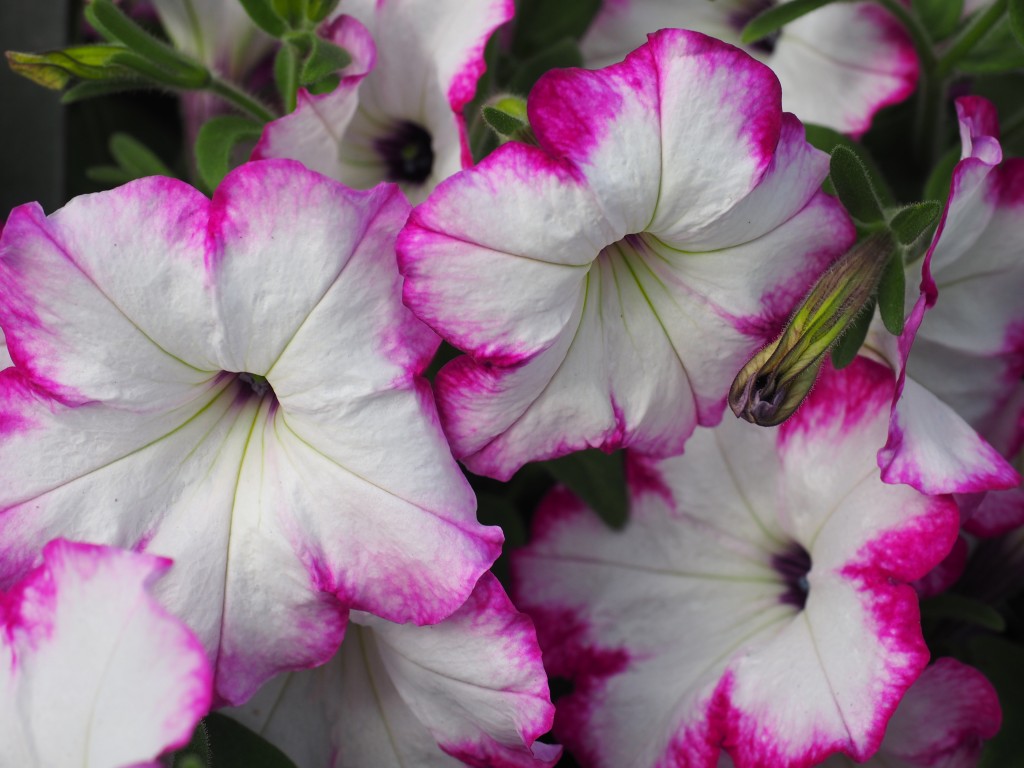
Petunia
The ultimate annual for high-impact color! Petunias come in almost every color and there is a petunia for every need- mounding, trailing, or spreading. Old-school grandiflora plants have blossoms that can reach a diameter of 4” and newer choices include amazing color combinations, often on the same plant. Other innovations include varieties that do not require deadheading and shades that fade into a blend of colors (such as Indian Summer, which shows off yellow, peach, and orange flowers as the blossoms age).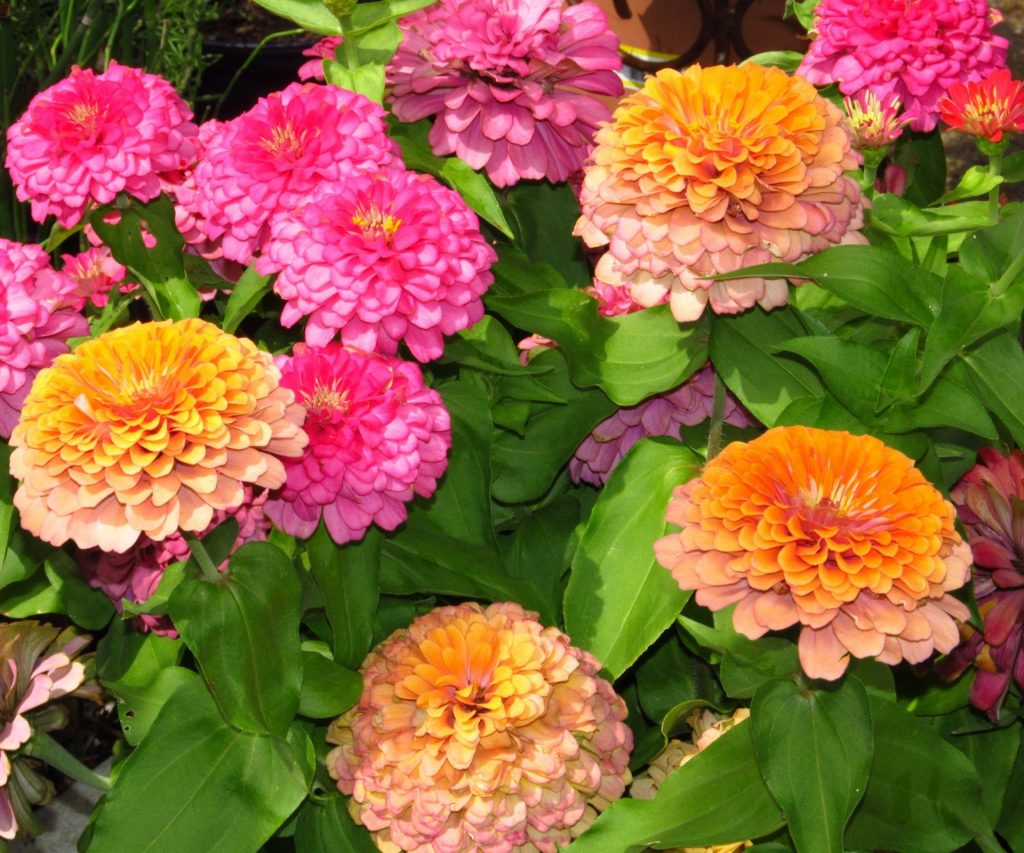
Zinnia
Every garden should include some zinnias, whether tall or small, single or double. Zinnias are available in red, orange, yellow, pink, salmon, white, and magenta with heights ranging from 8” to 3’. Taller plants will provide cut flowers all summer! Both showy and durable, zinnias are an outstanding choice from seeds or starts.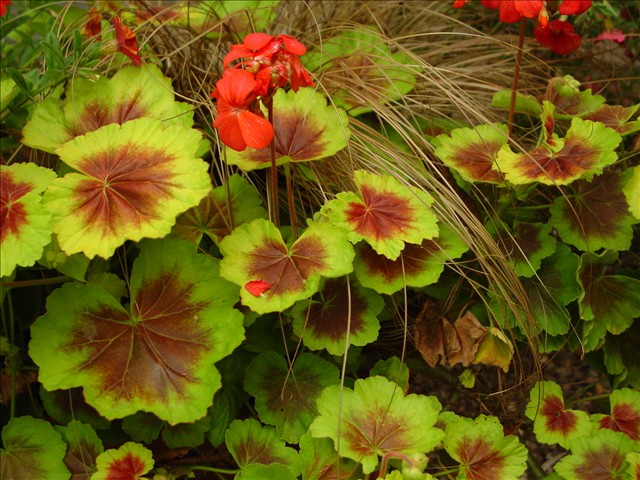
Geranium
Like petunias, geraniums can be traditional or modern. A classic red geranium in a terracotta pot will always be in style, but why not try a salmon variety with lime-green leaves? Another new introduction pairs crisp white and Kelly green leaves with scarlet petals, and still others have a blend of shades in each flower. The new interspecific varieties are bred for even more heat tolerance and the intense colors are eye-catching. A little bit old and a little bit new, geraniums have something for everyone… and they are easy to propagate to bring in for the winter.
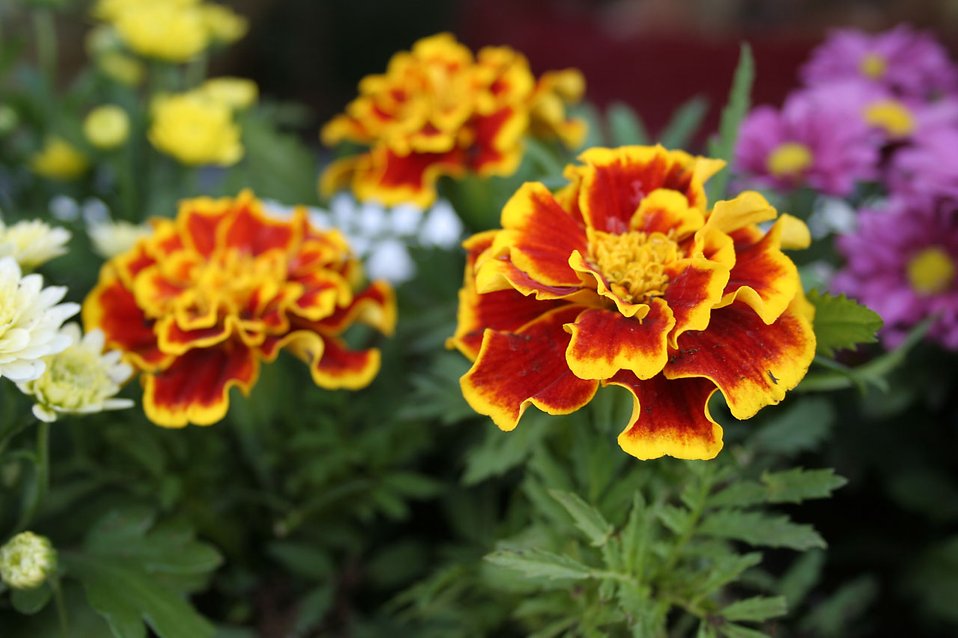 Marigold
Marigold
Just about everyone has grown a marigold from seed at some point, and it’s that ease that makes them so appealing. Diminutive dwarf varieties are great in the front of a bed and the taller French varieties are a solid choice for containers and vegetable gardens. For serious impact, try the large-flowering African types- plants can reach 2.5” and blossoms up to 5” across. Bees love marigolds, so expect to share your flowers. If not deadheaded regularly, marigolds are likely to re-seed themselves and become a permanent part of the landscape (for better or worse!)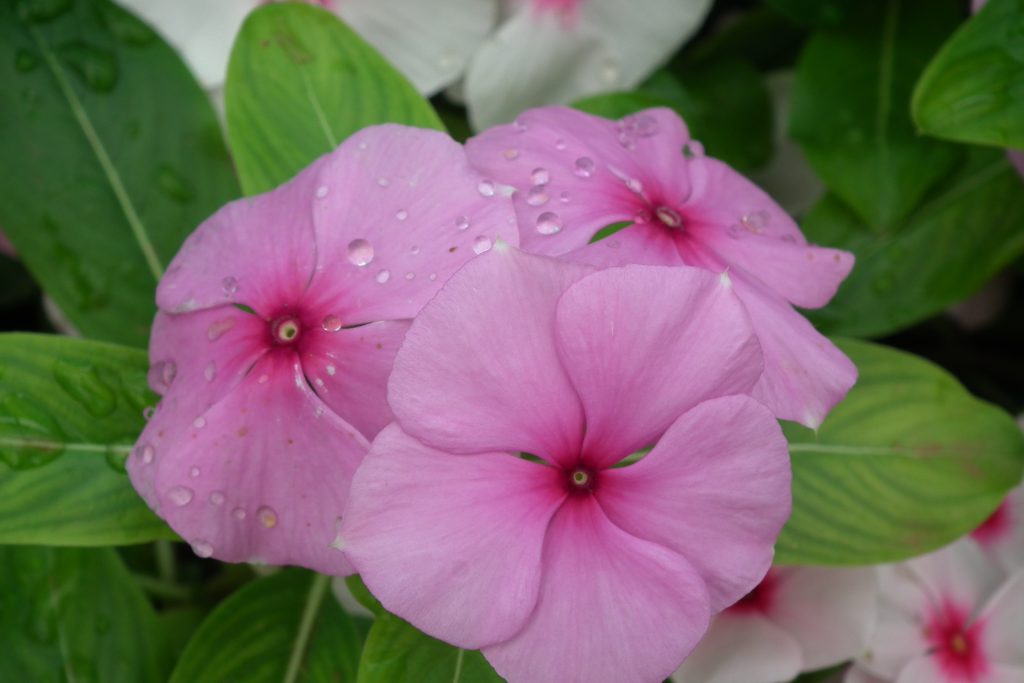
Periwinkle
Also known as vinca and available in white, pink, coral, red, magenta, and now deep purple. Great combination or filler plant and would do well in a border or container.
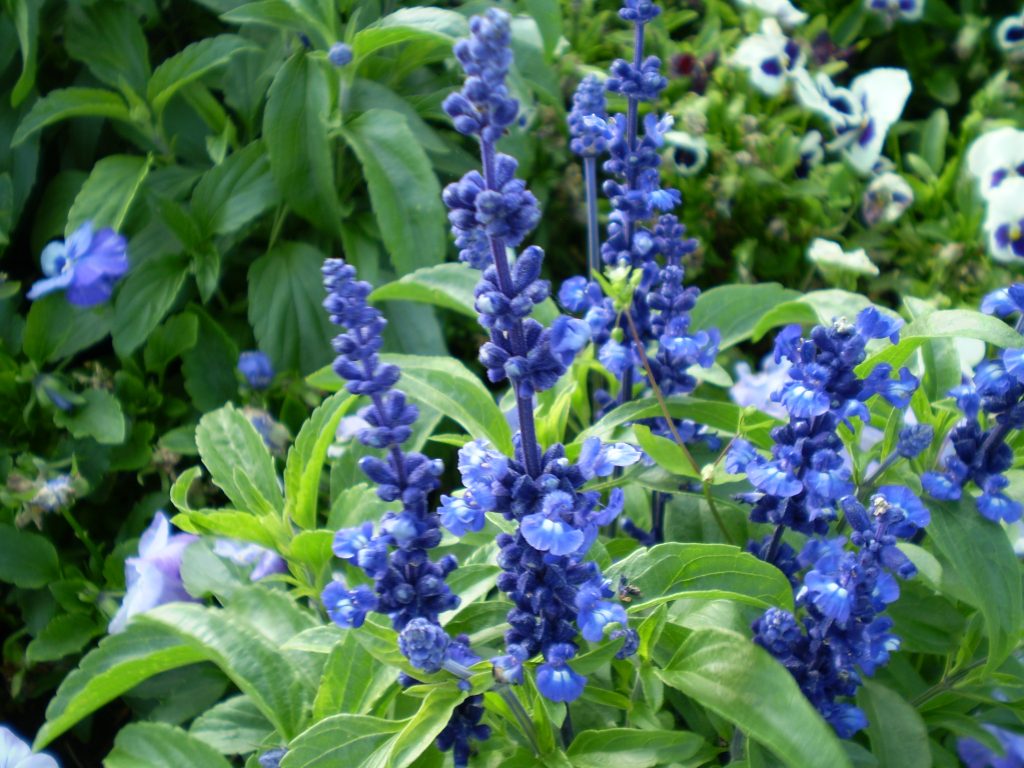
Salvia
Annual salvias come in red, coral, white, lavender, deep purple, deep blue, and red/white. Some are tall (up to 3’!) and wispy, while others are more compact with a solid block of flower color. Depending on height and the desired look , salvias can function as either thrillers or fillers in a combination planting.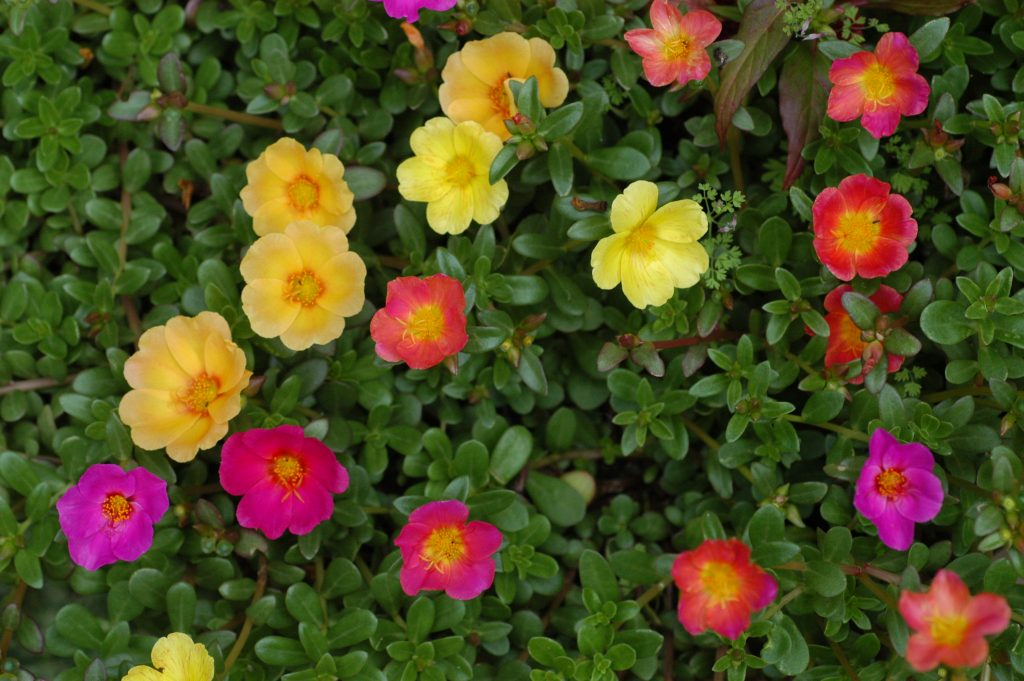
Portulaca
Portulaca can be upright or trailing and thrive in hot, dry spots. Flowers are 1-2” across and available in brilliant orange, yellow, magenta, cherry red, salmon, or white. Upright varieties are prolific self-seeders and may come back on their own each year. The trailing portulaca are less likely to re-seed and are outstanding in baskets or containers.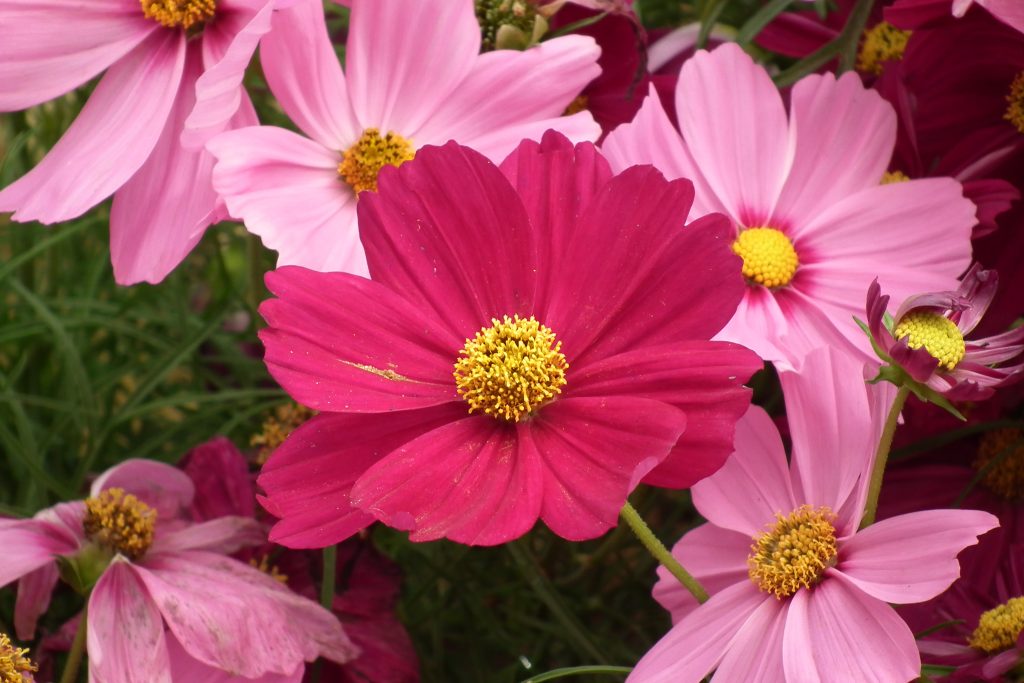
Cosmos
Available in white, pink, cerise, and chocolate, cosmos are a cheery addition to any sunny garden. They will self-seed aggressively and form maintenance-free meadows if left alone.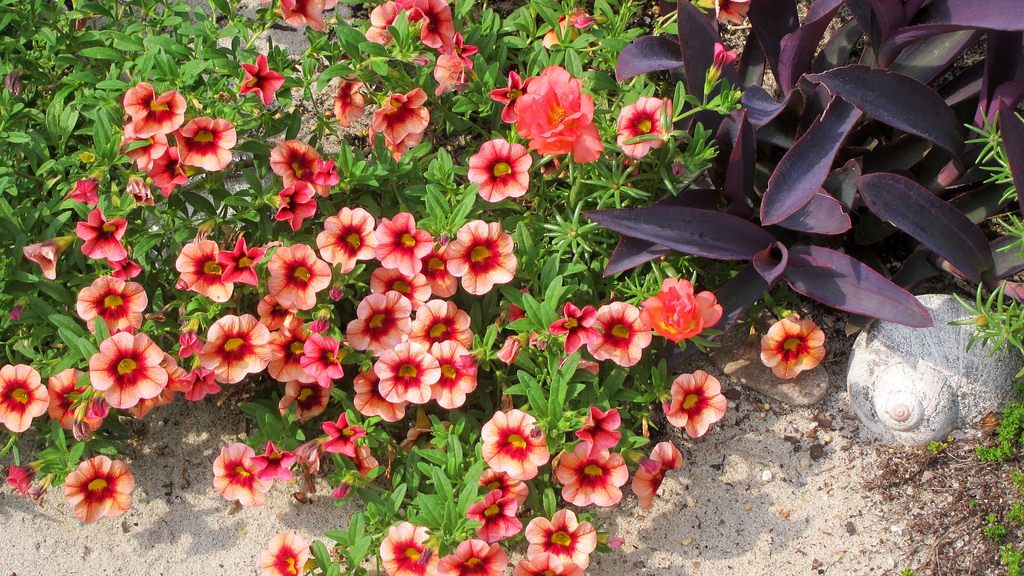
Calibrachoa
These are workhorse plants with massive flower power. Calibrachoas come in every color and unlike their petunia cousins, need NO deadheading at all. They are outstanding in containers and baskets and can be pruned back to create a bushy effect (rather than a cascade of color). They are an easy filler/spiller and can be tucked in almost anywhere when small. A rapid growth habit makes them knot together if planted in packs, so calis are typically sold as individual plants. This is balanced out by the size that one plant can achieve (fewer plants are needed).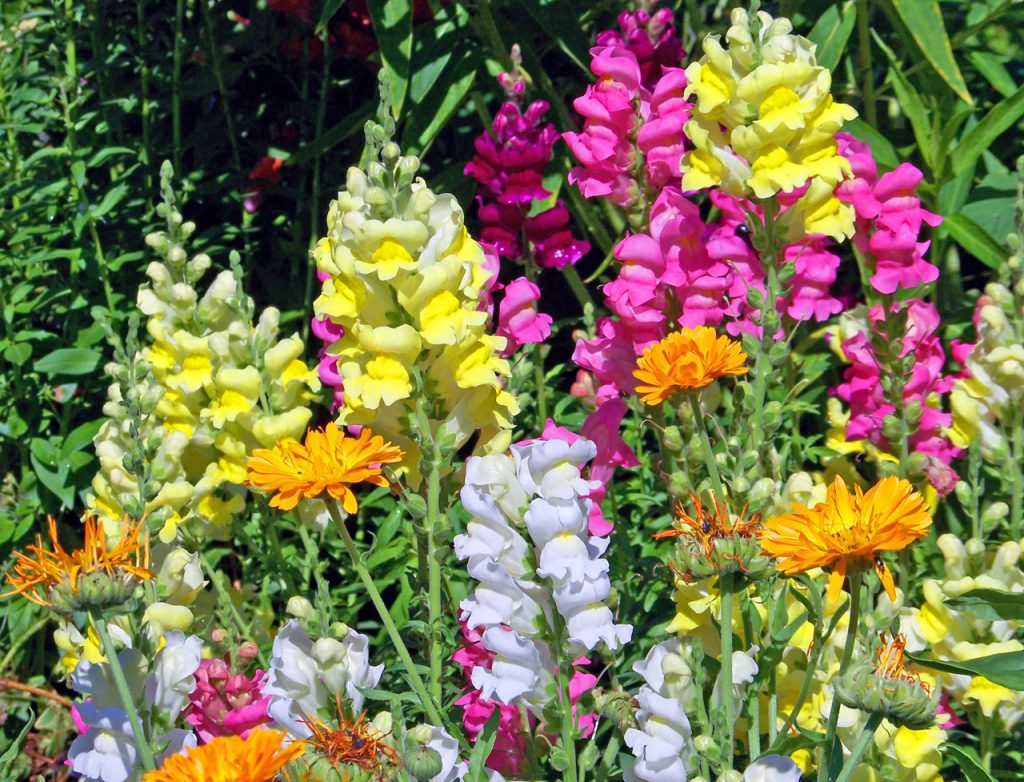
Snapdragon
A traditional favorite of children and the young-at-heart—who doesn’t love making the blossoms “snap”? This family includes both tall and small varieties, which makes snapdragons useful as either a thriller or filler. A row of ‘Rockets’ at the back of a bed will provide colorful height for the whole summer, and short-stuff ‘Montego’ plants are excellent for a more subtle effect. Snaps readily reseed themselves, so be prepared for volunteers in the spring (or be aggressive about cutting off spent flower spikes). Available in red, orange, yellow, white, pink, magenta, and burgundy.